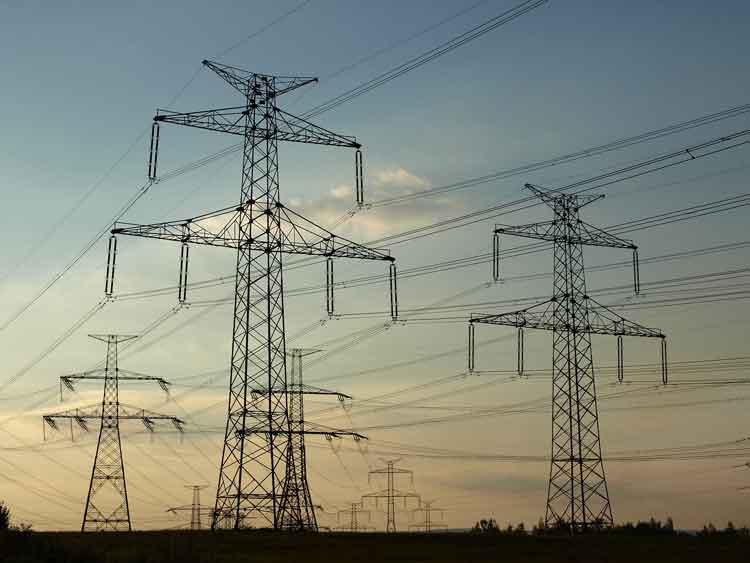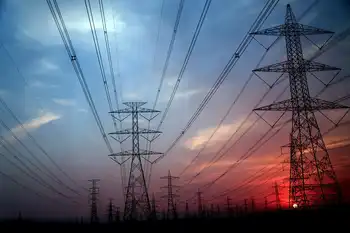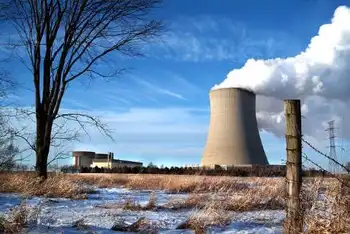Entergy misses deadline for power deal
By Brattleboro Reformer
CSA Z463 Electrical Maintenance -
Our customized live online or in‑person group training can be delivered to your staff at your location.

- Live Online
- 6 hours Instructor-led
- Group Training Available
In July, Senate President Pro Tem Peter Shumlin, D-Windham, and House Speaker Shap Smith, D-Morristown, informed Entergy that it would be near impossible for the Vermont Legislature to vote on whether Yankee should be allowed to continue operation past 2012 unless a power purchase agreement, guaranteeing Vermont a cut rate on electricity from the power plant, was reached.
Entergy has applied to the Nuclear Regulatory Commission to extend the operating license of Yankee for another 20 years, from 2012 to 2032. In addition to NRC approval, Entergy must also receive a certificate of public good from the Public Service Board and the OK from the Vermont Legislature.
Without a deal, said Smith, "It will be extremely difficult for the Legislature to consider the question of continued operation this year."
Even though the power purchase agreement is just one of the factors the Legislature needs to consider, he said, "It is a critical one. Without that issue being resolved it's difficult to move forward."
Though Smith said he can't predict what the outcome would be of a vote on continued operation, he said that conversations he has had with other legislators indicate without an agreement, "It is unlikely that Entergy would be able to get a favorable vote."
Shumlin is out of the country and was not available to speak with the media.
Steve Costello, spokesman for CVPS, said negotiations are continuing but there is the possibility that an agreement won't be reached.
"We have not seen an offer that we believe would be acceptable to Vermont," he said. "We think there is significant value to Vermont in the jobs, taxes and economic contributions the plant makes to the state, but we also need an agreement that can be approved by the Legislature and regulators."
CVPS and GMP are not sitting on their hands waiting for a beneficial deal from Entergy, said Robert Dostis, customer relations and external affairs for GMP.
"GMP has started the process of purchasing some replacement power for 2012," said Dostis.
Dostis said because energy prices are currently low, now is a good time to pursue other power options.
"At present we are looking at securing 25 megawatts of power starting in 2012," he said. "This would reduce our need of Yankee for the time period of that contract by that amount."
Nearly half of Yankee's 650 megawatts go to supply more than one-third of the state's electricity. Vermont also gets about one-third of its power from Hydro-Quebec, another contract that is due to expire in 2012.
Late last year, Vermont's utilities issued a request for proposals to purchase electricity from regional power suppliers. In January of this year, they announced they had received "dozens" of new energy sales proposals in response.
In total, more than 1,000 megawatts were offered, according to a press release.
"We expect to announce some new energy deals in the coming months, some contingent on the Yankee discussions, some not contingent on those talks," said Costello.
Nonetheless, said Costello, "We think there is great value to having Yankee if we can get a satisfactory power purchase agreement, so we will continue to talk as long as we retain hope for success. But it is possible we won't ever agree to terms."
Entergy asked for a "mutually agreeable extension" from the Legislature past the November 1 deadline, said Rob Williams, spokesman for Yankee.
"But they didn't agree to that," he said, adding Entergy will continue its negotiations with CVPS and GMP.
"Our hope is to reach an agreement on a fair price that provides stable, predictable and long-term value to all the parties," said Williams.
Entergy has worked hard to develop a power purchase agreement, he said, up to 20 years, which will provide a long-term value to Vermonters, "While allowing us to operate a safe, reliable and economically viable plant."
Entergy hopes to present a power purchase agreement to the Vermont Public Service Board on December 18, said Williams. If no agreement is reached by then, Entergy will instead present to the PSB what it proposed to the utilities, he said.
"We have said that there is value even without the power purchase agreement," said Williams.
What that value might be could be up to a pair of legislative committees to determine.
Smith and Shumlin sent a formal request to the Senate Finance and House Natural Resources and Energy Committees and asked that they hold a hearing "to gain a fuller understanding of our region's electricity market."
Smith said the Legislature also has to consider that Yankee is "a substantial business" in Windham County that employs a lot of people and has a significant impact on the local economy.
"But there's also the question of whether it's good for the citizens of Vermont as a whole," he said.
Another issue of concern for legislators, said Smith, is the cost of cleaning up the site when the plant is closed and whether the decommissioning trust fund will grow to the amount necessary, which some say could be $1 billion or more.
"We have communicated that concern to Entergy but the response to date has not been satisfactory," said Smith.
Smith said he and others also have concerns about Entergy's plan to spin off Yankee into a wholly independent company named Enexus.
"I do have real concerns about the financial structure of Enexus," he said. "I wonder how many times we have to see a debt-laden structure fail for us to ask questions about whether it's a good thing or not."
The Public Service Board has to issue certificates of public good both for the Enexus spin off and the plant's continued operation.











